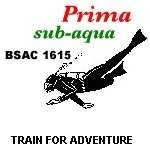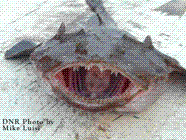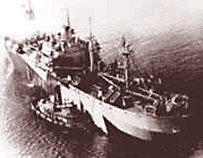
Issue 14 March 2008
Off-Gassing...
(Web Version)
Welcome to the 14th edition of our newsletter.
Profile
Items for Sale:
10 litre Cylinder. In test
£50 contact: Richard Mace
0121 232 6007
-------------
Poseidon Cyclone regulator & Octopus (requires service) £50.
Also Poseidon Cyclone regulator & long hose (requires service) £50. see John Searle 07776 411406
--------------
If you have any items for sale please let us know.
Profile— we need volunteers please, just a few words saying what made you take up this sport in the first place and why on earth you carry on!
Animal of the Month
If anybody has any ideas about what they would like to see in the newsletter, please talk to us – or email if you prefer – just remember it’s read by the family!
Editors Corner
Thank you to everyone who has contributed to this months issue, and apologies for any mistakes.
Any further articles for next months edition would be appreciated, (any gossip, scandals, etc that’s printable) so let us know by 28th March.
Hope you enjoyed this issue.
Monkfish is the English name of a number of types of fish in the northwest Atlantic, most notably the species of the anglerfish genus Lophius and the angelshark genus Squatina. The term is also occasionally used for a European sea monster more often called a sea monk.
 Monkfish
is the most common English name for the genus
Lophius
in the northwest Atlantic but goosefish is used as the equivalent term
on the eastern coast of North America. Monkfish have three long
filaments sprouting from the middle of its head; these are the detached
and modified three first spines of the anterior dorsal fin. As in most
anglerfish species, the longest filament is the first, which terminates
in an irregular growth of flesh, the esca. This modified fin ray is
movable in all directions. This esca is used as a lure to attract other
fishes, which monkfish then typically swallow whole. Experiments have
shown, however, that whether the prey has been attracted to the lure or
not is not strictly relevant, as the action of the jaws is an automatic
reflex triggered by contact with the esca.
Monkfish
is the most common English name for the genus
Lophius
in the northwest Atlantic but goosefish is used as the equivalent term
on the eastern coast of North America. Monkfish have three long
filaments sprouting from the middle of its head; these are the detached
and modified three first spines of the anterior dorsal fin. As in most
anglerfish species, the longest filament is the first, which terminates
in an irregular growth of flesh, the esca. This modified fin ray is
movable in all directions. This esca is used as a lure to attract other
fishes, which monkfish then typically swallow whole. Experiments have
shown, however, that whether the prey has been attracted to the lure or
not is not strictly relevant, as the action of the jaws is an automatic
reflex triggered by contact with the esca.
It grows to a length of more than 5 ft; specimens of 3 ft are common.
Two species Lophius piscatorius and Lophius budegassa are found in north-western Europe and referred to as monkfish, with L. piscatorius by far the most common species around the British Isles.
Wreck of the month - James Egan Layne
Dive Site: James Egan Layne, 7,000 ton wreck Length: 130 metres (427 feet)
Location: 50°19.54N; 4°14.65W
Depth: 24 metres (79 feet)
Visibility: 15 metres (50 feet)

The James Egan Layne lies shotted in Whitsand Bay, Plymouth, and is an extremely popular British wreck because of its depth. It sank in March 1945 after ferrying men and materials across the world for the war effort. At the height of World War II, it was clear that cargo vessels were being sunk at a rate faster than which they could be built. In an effort to maintain the supply of food, vehicles and other equipment to the troops, the Americans found a way of welding aptly called 'Liberty' ships together that were 400 feet long weighing in at around 7000 tons in just 24 hours by an almost entirely female workforce. After being hit by a torpedo from a German U-boat near the Eddystone reef, the James Egan Layne was towed towards Plymouth in order to save as much of her cargo as possible. However on the way back, her stern collapsed causing her to sink in Whitsand bay, where she still sits upright, pointing north towards the shore.
After sinking her masts and funnel still stood proud out of the water and making it an easy dive location to find. However, in the late 1960's it was deemed a hazard to the local shipping traffic and so the bridge and the masts were razed to the seabed where they can still be seen to the port side. Most of the cargo was removed before she sank, but there are plenty of pick axe heads, pulleys and locomotive parts in her five holds.
If you only have the chance for one dive with a 12l cylinder, I would recommend you get the skipper to put you down on the bow (there is sometimes a buoy here if you are lucky). Descend down the bow to the seabed at a maximum of 23m and look back up. The silhouette of her intact bow is one on my favourite underwater views. Swimming up the port side then allows you to see the vast wall of her hull, covered in deadman's fingers and anemones, as well as the bridge and forward masts that now lie on the sea bed, home to a large variety of fish.
Thanks to the Editors: Sue Mace, Wendy Munday, Phillipa Cresswell, Lin
Noakes
![]()